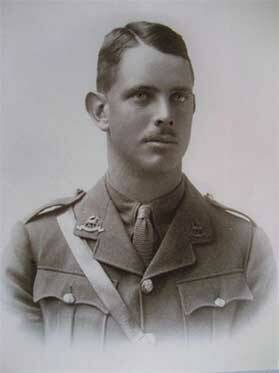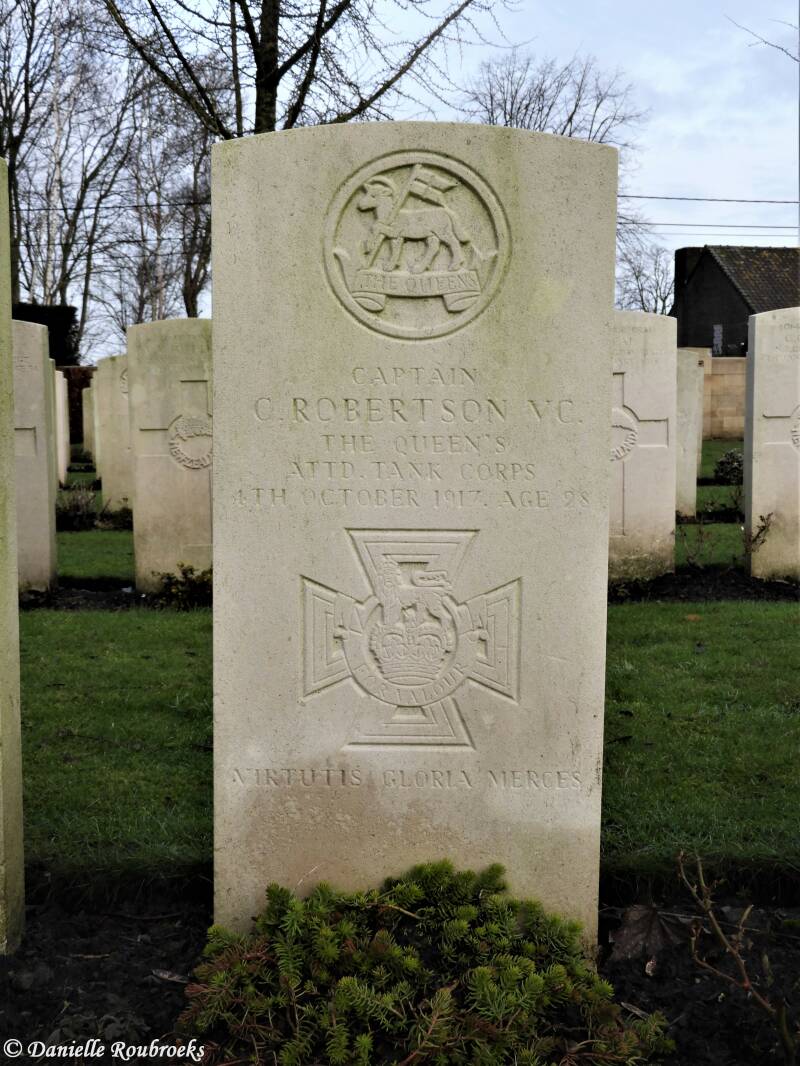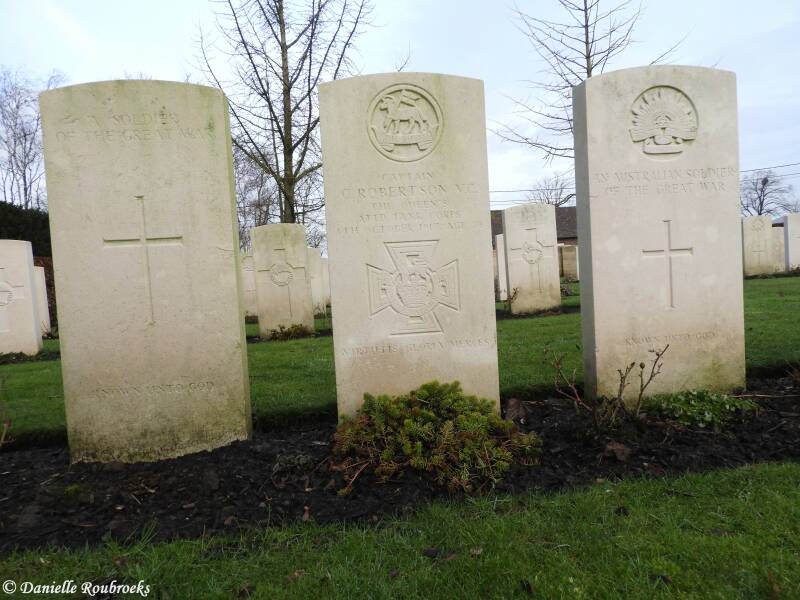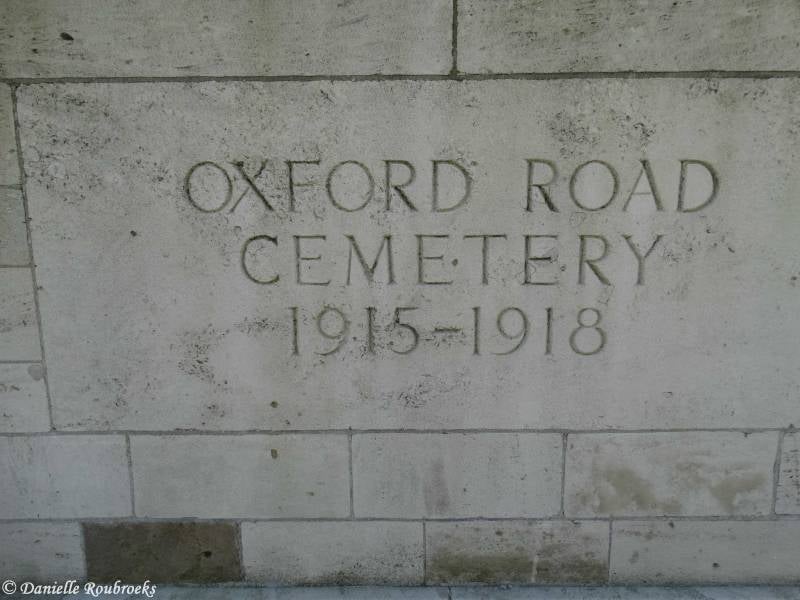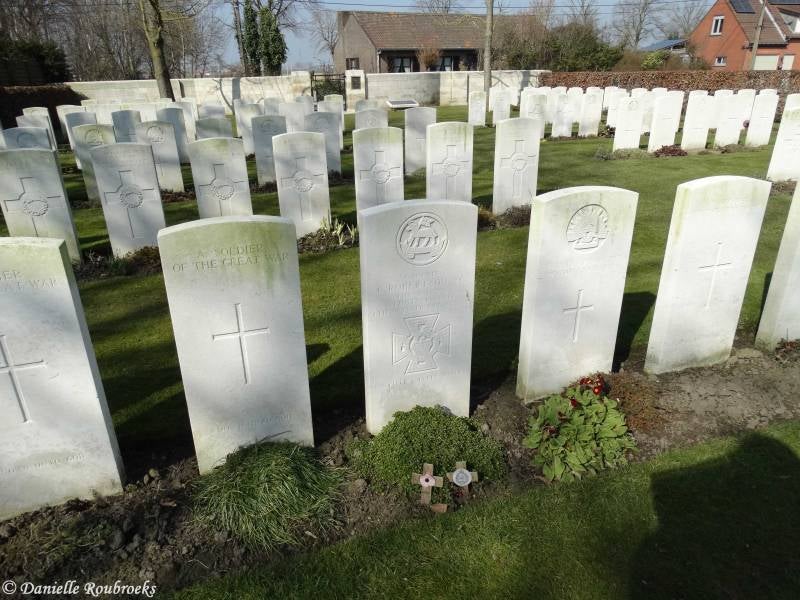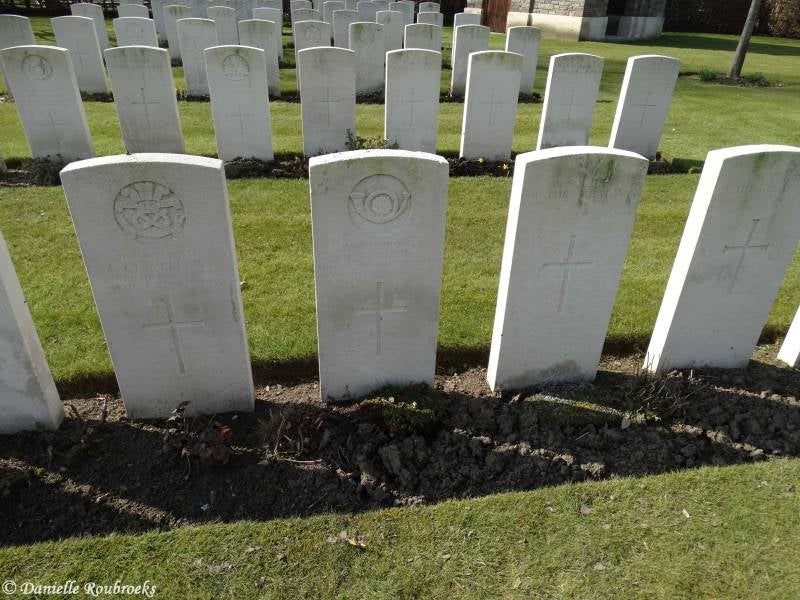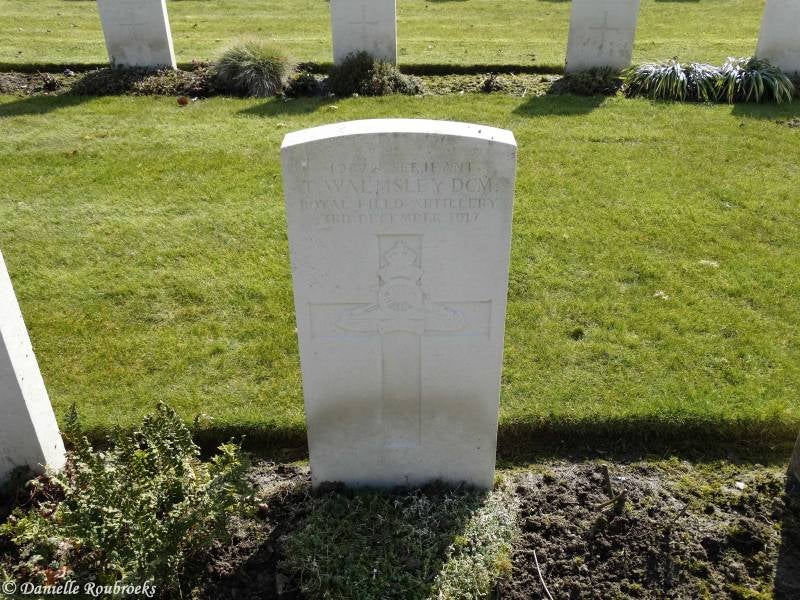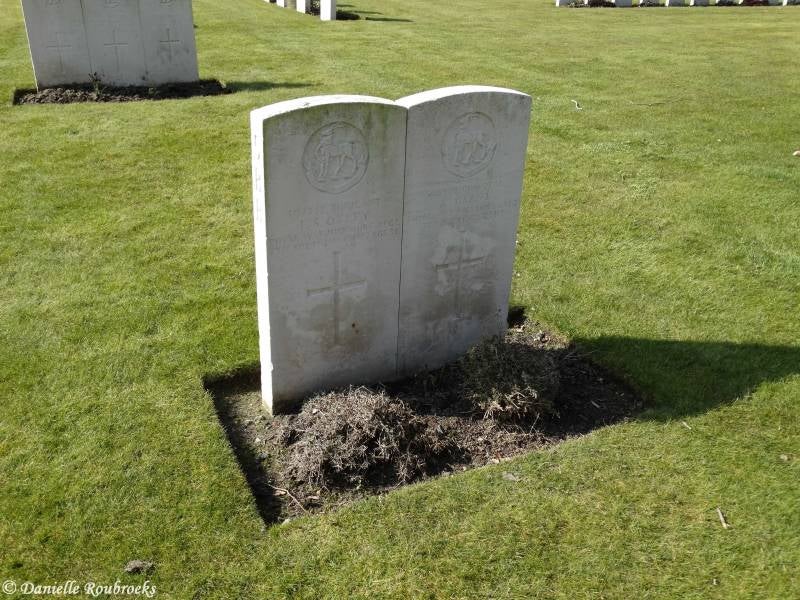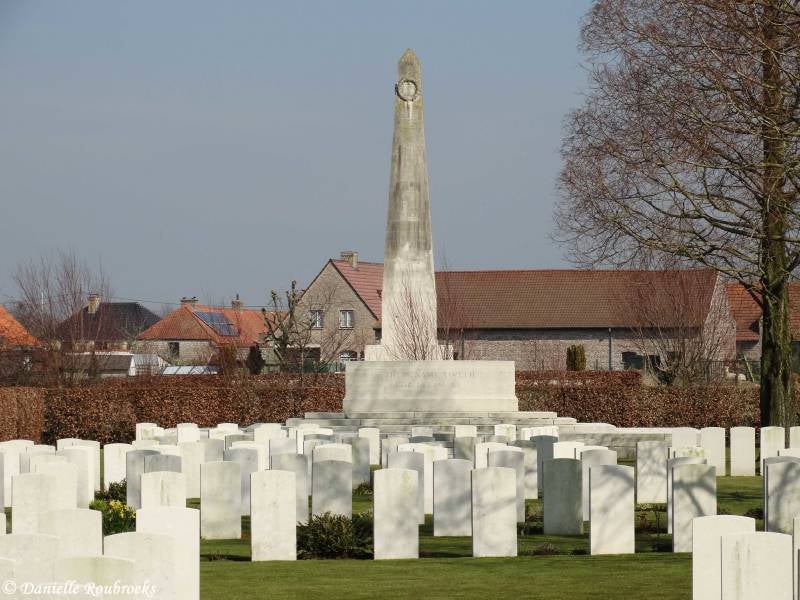Oxford Road Cemetery
History Information (Source: CWGC)
Oxford Road was the name given to a road running behind the support trenches, from a point west of the village of Wieltje south-eastwards to the Potijze-Zonnebeke road. Plot I is the original Oxford Road Cemetery and was used by the units fighting on this front from August 1917 to April 1918. In October 1917, another cemetery, known as Oxford Road Cemetery No.2, was started close by and now forms Plot V of the cemetery as it appears today. After the Armistice, Plots II, III and IV were added when scattered graves from the battlefields east and south-east of Ypres (now Ieper) were brought into the cemetery.
There are now 851 Commonwealth casualties of the First World War buried or commemorated in this cemetery. 297 of the burials are unidentified and special memorials commemorate three casualties known to have been buried in the cemetery, but whose graves could not be located. The cemetery was designed by Sir Reginald Blomfield.
Served with
· United Kingdom (404)
· Canadian (83)
· Australian (34)
· New Zealand (34)
· German (2)
Served in
· Army (557)
VICTORIA CROSS
Captain Clement ROBERTSON - 3rd Bn. The Queen's (Royal West Surrey Regiment)
Secondary Unit, Regiment: attd. "A" Bn. Tank Corps
Died 04 October 1917 Age 28
Country of Service: United Kingdom
Awards: Victoria Cross
Clement was the fourth son of Major John Albert Robertson and Frances Octavia Caroline Robertson (née Wynne), of Struan Hill, Delgany in County Wicklow. His father, an officer in the Royal Artillery, was serving in South Africa when Clement was born at Pietermaritzburg, South Africa, on 15 December 1890. His mother's family was from Ireland and Clement grew up in Delgany. He went to school at Haileybury College (1904–1906) before attending Trinity College Dublin to study Engineering. After graduation in 1909, he went to Egypt to work as an engineer on a Nile irrigation project.
Citation
An extract from "The London Gazette," No. 30433, dated 14th Dec. 1917, records the following:- "For most conspicuous bravery in leading his Tanks in attack under heavy shell, machine-gun and rifle fire. Capt. Robertson, knowing the risk of the Tanks missing the way, continued to lead them on foot, guiding them carefully and patiently towards their objective although he must have known that his action would almost inevitably cost him his life. This gallant officer was killed after his objective had been reached, but his skilful leading had already ensured successful action. His utter disregard of danger and devotion to duty afford an example of outstanding valour."
Grave Reference: III. F. 7.
(Source: Wikipedia)
Captain Robertson's Bridge, monument in Zonnebeke


